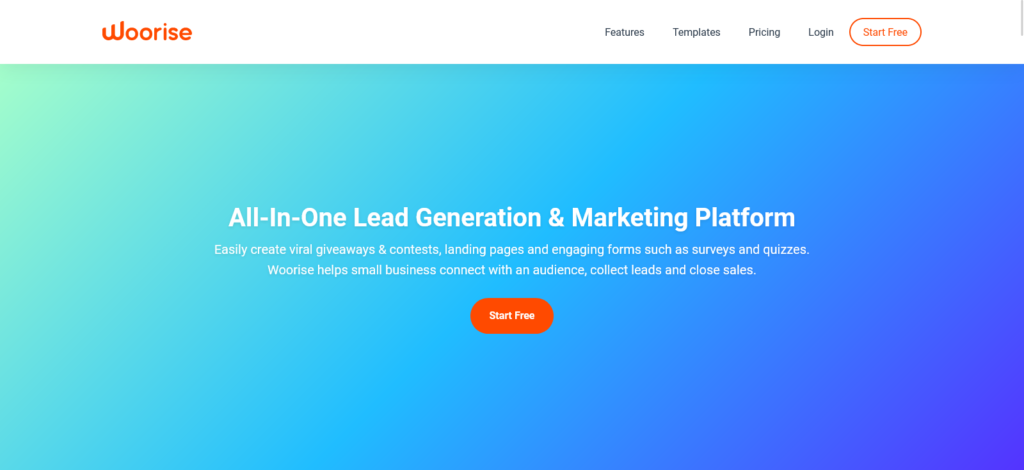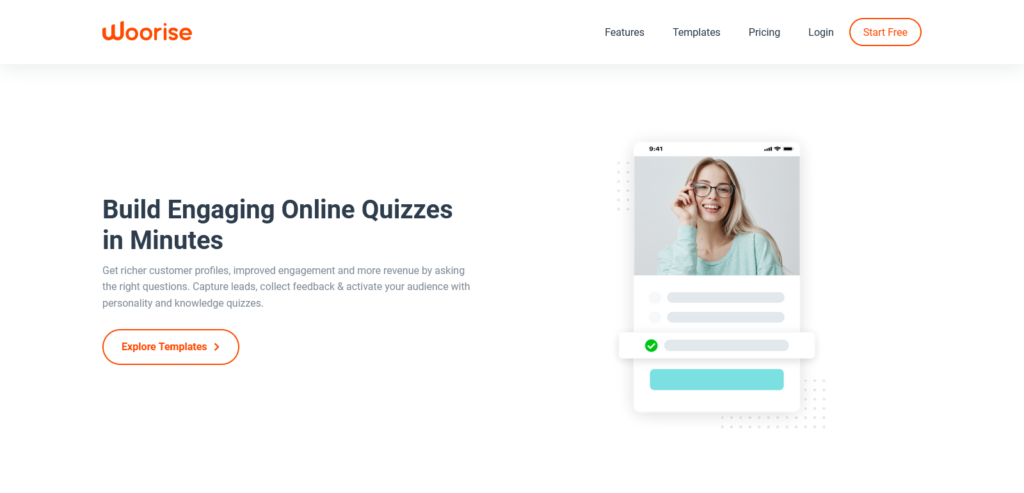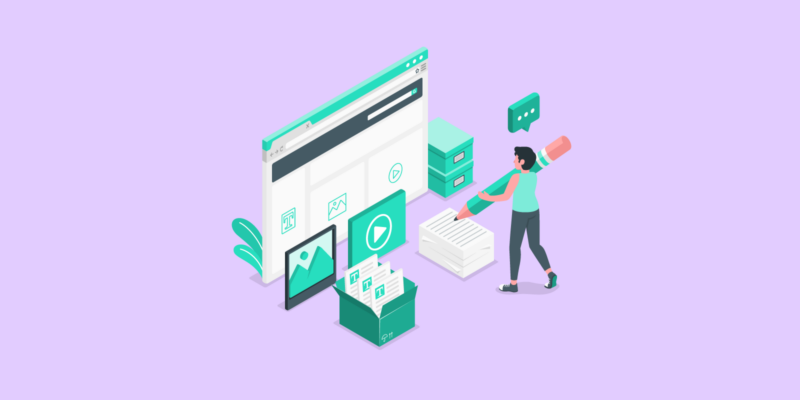Based on research, businesses with 10-15 landing pages have a 55% increase in conversions compared to those with less than ten. And that those with over 40 landing pages saw an increase of over 500%.
For years, marketers have defined landing pages as a sales tactic focused on getting people to perform a particular action.
However, nowadays, landing pages have become a required element for your website, no matter the type of business you’re in, be it technical websites or eCommerce websites that sell pet supplies.
In this article, I will explore what kind of role landing pages play in marketing and why.
Let’s get started.
In this article
What is a Landing Page?

To put it simply, a landing page is any web page that visitors land on. Using the marketing term, it’s usually a standalone page different from your homepage or other web pages. It serves a single purpose: to follow up any promises you’ve made in your content.
A landing page is a trading place where you turn your visitors into customers by exchanging things. For example, offering a special deal in return for visitors providing their contact information.
An excellent landing page should convince potential customers that it’s worthwhile to provide their personal details in exchange for whatever it is you’re offering.
6 Different Types of Landing Pages
There are various types of landing pages you can use. As a general rule, a landing page should show visitors that they’ve landed in the right place and encourage them to take some sort of action.
By using good landing pages, you both improve and refine your visitor’s experience and increase the chances of conversion. With that said, here are some varieties of landing pages.
1. Lead Generation Landing Page
This type of landing page is focused on collecting leads. It is often used in the middle of the sales funnel, where customers are evaluating your products and services and are in the process of moving towards purchasing them.
It works by presenting both a request and a reward. The request is asking visitors for their information, and the reward is the offer you’re promoting. Both requests and rewards should be enticing and relevant.
2. Click-Through Landing Page
Unlike lead generation, this type of landing page directs your customers to take action on your website, like heading to the shopping cart or reading more about the product.
It only needs a short explanation and a clear call to action linked to the customer journey’s final destination.
3. Squeeze Page
Similar to lead generation, this type of landing page focuses on gathering data. However, squeeze pages are mainly used for collecting email addresses to add leads to your mailing list.
4. Sales Page
This is the most challenging type of landing page to create because it doesn’t focus on getting leads. Instead, it tries to convince people to buy from you. This type of landing page requires you to thoroughly understand your customer’s needs and their position in the sales funnel.
The content needs to contain a detailed promotion that clearly demonstrates the value you’re proposing and always aims to get people to click the button to make the purchase.
5. Splash Page
This is the most basic type of landing page. The primary purpose is only to provide your visitors with basic information before they enter your website. There will typically be only one or two images, a little bit of content, and some straightforward communication like an announcement or a simple yes/no request.
A splash page could be as simple as asking customers to choose their language preference or verify their age.
6. Viral Landing Page
This type of landing page is mainly built to create brand awareness. The page will usually contain links to the other pages on your website subtly.
The main point here is the content, which should be fun and engaging enough, so readers will want to share the page with their peers.
Why You Should Use a Landing Page
Effective landing pages make it very clear what a visitor can expect from a web page and how to get it. But there are more benefits from using a landing page than that.
Lead generation
Landing pages are your lead generation machine. If you have great products or services to promote, you may want to create a landing page that details, demonstrates, and sells them.
You can also use lead generation landing pages to collect your users’ contact details by asking them whether they’re interested in earning a special offer by filling out a form beforehand.
Advertising Conversion
Any form of advertising is more effective if targeted to a specific page containing your ads’ supporting message. The more relevant the page to the ads, the more effective it will be.
Smart Content
Creating specific landing pages that address different market segments or product segments can funnel people to the particular type of content they desire. This helps you find the ideal buyer by looking at the demographics data gathered from the landing page.
8 Landing Page Best Practices
When it comes to having lead generation landing pages that show up on the top of the google search result page, you’ll want to follow some of these practices to help maximize their potential.
1. Write a Great Headline
Writing a great headline is like a lighthouse for your potential customers. It essentially tells them that they are in the right place and you have all the answers. However, your headline needs to be more than just an overview of your website. It should also attract the interest of your readers.

The primary key to writing a great headline is to first understand your target audience, why they want to visit your website, and what problem they may be facing. Once you know these three criteria, you can come up with great headlines.
For example, if you run an online course and you want people to sign up for it, your headline could be “Learn about your dream course today!” On the other hand, if you want people to sign up to your newsletter to know what courses you offer, the headline could be “Learn more about the courses we offer.”
2. Use CTAs
Most companies place their call-to-action (CTA) buttons above the fold, but its placement may vary since your CTA is essentially what you want your visitors to do on your landing page.
However, before creating the CTA, you need to decide what you want visitors to do on the landing page. This is vital because you can end up with a different CTA that has no meaning at all.
For example, “Contact Us Now!”, “Get Your Free Quote!” and “Get Started Today” are excellent choices for this. However, they won’t convert if the landing pages are not related to this type of conversion in any shape or form.
3. Add Visuals
Visuals are often referred to as hero shots of a landing page. This is because visuals act as the aesthetic component and tell people that they are indeed in the right place without expressing it in words.
Hero shots can become the leading visual representation of your business’s product or service and set the tone for your entire landing page. It can create an emotional experience for your audience. This is why most landing pages don’t have long paragraphs.
The visuals should always support your overall campaign message. This is because visitors are always looking for a positive experience rather than a persuasive essay. So try to convey words through images.
4. Use a Preset Responsive Theme
If you’re nearing a deadline and the web designers and developers can’t come up with a remarkable landing page in time, you can always try using a premade theme with built-in responsiveness.
CMSs and website builders will have paid and free landing page templates. Simply choose one that suits your preferences and let the designers adjust the elements to follow the other best practices mentioned in this article.
5. Design for the Right Devices
People browse the internet using devices with various screen sizes and resolutions. The software that powers your website needs to be able to render the landing page perfectly every time. The landing page’s content shouldn’t be obscured, distorted, or cut off.
To make this possible, developers tend to use responsive breakpoints, also known as CSS breakpoints. These points are defined in code, allowing the landing page to respond and automatically adjust your page’s layout according to the screen size and resolutions.
Below are some of the common device resolutions which are used as breakpoints:
- 1920 x 1080
- 1536 x 864
- 1366 x 768
- 414 x 896
- 375 x 667
- 360 x 640
6. Remove Navigation and Other Distractions
An excellent landing page should focus on hitting the conversion goal. To maximize conversions, you should minimize other distracting elements that might redirect your visitors’ attention from the important content like CTAs and testimonials.
Try resisting the temptation to include unnecessary links that lead them away from the landing page, such as website navigation, links back to your home page, or additional calls-to-action.
Your landing page works best if it stands alone. Only include CTAs and links that lead to conversion, like heading to the shopping cart or product descriptions.
7. Include Social Proof
Having marketers promote your products or services is a great way to attract people, but it can be hard at first because people think what they’re promoting is biased due to marketers working for your business.
On the other hand, if a real customer promotes your product, people are more likely to believe their review. Hence customer testimonials are one of the simplest ways to add social proof to your landing page.
So with that in mind, here are some ways to come up with great social proof:
- Use high authority sources – If business leaders want to say great things about your business, this means you have something great going on.
- Video testimonials – They come with significant added benefits of body language and real-life trials of your products or services.
- Dedicate enough space for each testimonial. More details make it more believable.
- Include a variety of testimonials – If you have several testimonials, it means a lot of people must love your business, so try including a variety of them on the landing page.
8. Test and Update Your Landing Page
Although you may use the right landing page tools and follow all the best practices mentioned above, there’s no guarantee that your landing page will work as you hoped it would.
To know whether your landing page is optimal, you’ll need to test various landing page designs. Try coming up with multiple hypotheses about how your target audience will interact with your landing page.
Then you’ll also want to test different ways to present the CTAs on your landing page. Try coming up with analytics to see which CTA style may provide the most conversions.
Make sure you thoroughly document every trial and error. Doing so will help you come up with the most effective landing page designs for your business.
Conclusion
A landing page is any web page that visitors land on. It serves a single purpose: to follow up any promises you’ve made in your content.
There are various landing page types, each serving a specific purpose. For example, lead generation landing pages focus on gathering data to get more leads, while click-through landing pages focus on convincing visitors to take action through links.
Landing pages make it very clear what a visitor can expect to get from a web page and provide directions on how to get it. They also bring many other benefits, such as lead generation, advertising conversion, and becoming more creative with content to fit the customers’ market segments.
In short, here’s how you can create an effective landing page:
- Write a great headline
- Use CTAs
- Add visuals
- Use a preset responsive theme
- Design for the right devices
- Remove navigation and other distractions
- Include social proof
- Test and update your landing page regularly
Follow the guidelines and advice provided in this article, and see your business grow.



